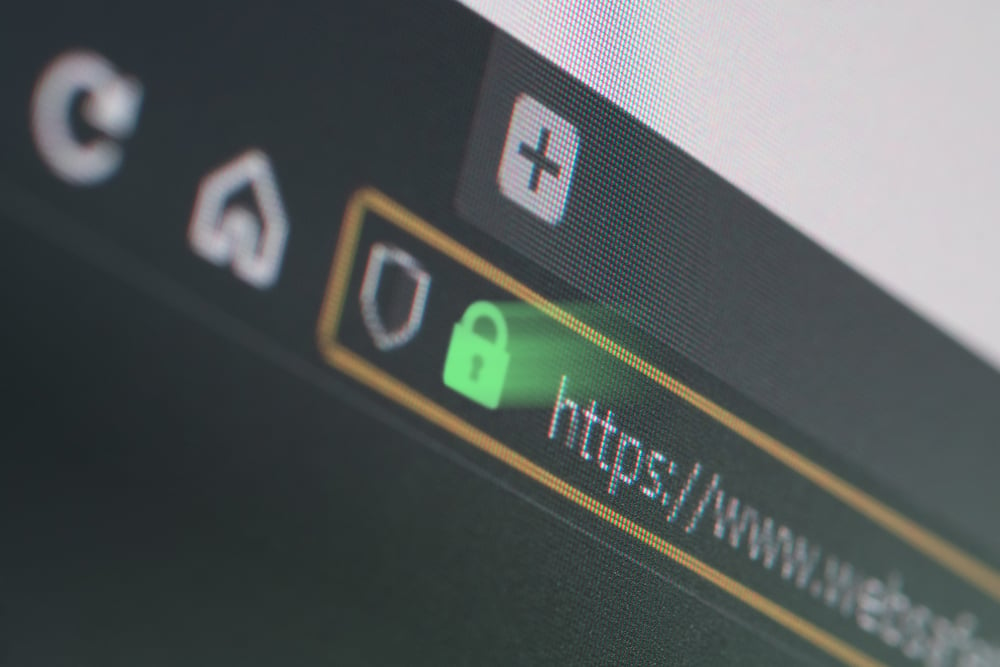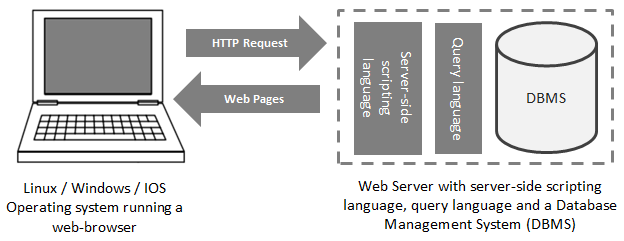
SSL stands as Secure Sockets Layer. It protects your website by diverting communication through secure channels that use sophisticated encryption keys. After the SSL handshake signal has passed, the communication is decrypted at both the data and user ends. This handshake signals that the communication was encrypted.
Secure Sockets Layer
Secure Sockets Layer (SSL), a networking protocol, creates an encrypted connection between web clients and web servers. The protocol uses two keys - one public and one known only to the sender - to encrypt and decrypt data. SSL-enabled sites are identified by HTTPS in the URLs. If the user requests an encrypted session, the server will reply to him with a trusted cert containing a key.
The protocol uses asymmetric key encryption to encrypt data sent between the server and client. Like other encryption methods, the keys generated using symmetric encryption are unique for each connection. Moreover, the client and server negotiate the encryption details before the first byte of data is transmitted. This makes the encryption process secure and reliable.
Function
SSL is a security protocol which encrypts information that is being transferred between a website's users and the site itself. This means that only the intended recipient has access to the data. This is great if sensitive data has to be shared online. This also makes it virtually impossible for hackers intercept this data. SSL is essential for websites.

SSL establishes a trusted connection between a browser and a web server, creating a secure connection. It recognizes a certificate from a web server and sends it to the browser. The browser verifies that the certificate is authentic. It will then send back a digitally signed confirmation to begin an SSL encrypted connection. The browser and the web server share the encrypted data.
Types
There are two types SSL certificates: self signed and third-party. Self-signed certificates provide data encryption and HTTPS to the address line. Self-signed certificates are not trusted, since anyone can create them without the help of a trusted third person. When browsing self-signed websites, most browsers will display warning messages.
SSL certificates are installed on a web server, or multiple web servers, and are used to validate domains. They can also be used to protect a website. An SSL certificate can protect more than one domain or subdomain.
Importance
SSL stands to Secure Sockets Load and protects sensitive information. This secure connection makes it impossible for computers to intercept or detect the data. This is often seen when website visitors fill out contact forms with personal data. This data could be accessed by identity thieves and hackers without SSL. To protect sensitive information of visitors, SSL should be used on all websites.
Google's rankings can also be affected by SSL. Google constantly updates its ranking algorithm. Having SSL can give your site a small boost in search engines rankings. SSL can also make your site seem trustworthy to users. Browsers such as Chrome will show a warning message if your site isn't secure, so it's important to have an SSL certificate.

How to get a certificate
It is a crucial step in protecting your website from online attacks. SSL certificates provide information about the site's owner, including its public key, serial numbers, expiration dates, and the digital signature from the certifying authority. These certificates authenticate your website and verify it is legitimate. You can check the HTTPS address in the URL to confirm the certificate.
You can easily install an SSL certificate to your site using certain CMS platforms. HubSpot CMS offers a free SSL. It can also renew the SSL certificate. This will occur 30 days before it expires.
FAQ
How Much Does it Cost to Create an Ecommerce Website?
It all depends on what platform you have and whether or not you hire a freelancer. eCommerce sites typically start at around $1,000.
You can expect to pay between $5000 and $10,000 for a platform once you have decided.
A template is usually less than $5,000 if you plan to use it. This includes any customizing you do to your brand.
How to create a static website
To create your first static website, you'll need to choose between two options:
-
Content Management System (a.k.a. WordPress): WordPress): You can download this software and install it on your computer. This will allow you to create an essential website.
-
You will need to create a static HTML website. If you have a good understanding of HTML, this is not difficult.
A professional may be able to help you create a large website.
Start with option 2.
Can I make my website using HTML and CSS?
Yes! If you've followed the steps, you should now be able create your website.
Now that you know how to create the structure of a website, you'll also need to learn some HTML and CSS coding.
HTML stands as HyperText Markup Language. This is like writing a recipe. It would include ingredients, instructions, as well as directions. Similarly, HTML tells a computer which parts of text appear bold, italicized, underlined, or linked to another part of the document. It is the language of documents.
CSS stands as Cascading Stylesheets. This is a stylesheet for recipes. Instead of listing each ingredient and instructing, you can write down general guidelines for font sizes, colors and spacing.
HTML tells a browser how to format a webpage; CSS tells a browser how to do it.
Don't panic if either of these terms are confusing to you. Follow these tutorials to create beautiful websites.
WordPress is a CMS.
Yes. It's a Content Management System. CMS allows you to manage the content of your website from within a web browser, instead of using applications like Dreamweaver and Frontpage.
WordPress is absolutely free! Hosting is included in the price, but you don't need to pay anything else.
WordPress was originally designed to be a blogging platform. However, WordPress now offers many options including eCommerce sites and forums, membership websites, portfolios and portfolios.
WordPress is easy to install and set up. Download the file from their website, and then upload it to your server. After that, you can simply access your domain name with your web browser.
After installing WordPress on your computer, you'll need a username and a password. Once you've logged in, you'll see a dashboard where you can access all of your settings.
Here you can add pages and posts, images, menus, widgets and plugins. This step can be skipped if editing and creating content is easy for you.
If you prefer to work with a professional web designer, you can hire them to manage the entire process.
What does a UI designer do?
A user interface (UI), designer is responsible for designing interfaces to software products. They design the visual elements and layout of an application. The UI designer may also include graphic designers.
The UI Designer should be a problem solver who understands how people use computers and what makes them tick.
A UI designer should have a passion for technology and software design. The field requires that the designer understands all aspects of it, from designing ideas to writing code.
They should be capable of creating designs using a variety tools and techniques. They should be able to think creatively and solve problems by creating innovative solutions.
They should be detail oriented and organized. They should be able create prototypes quickly and efficiently.
They should feel comfortable working with clients large and small. They should be able to adapt to changing situations and environments.
They should be able speak clearly and effectively with others. They should be able to express their thoughts clearly and concisely.
They must be well-rounded and have strong communication skills.
They should be highly motivated and driven.
They should be passionate about their craft.
What is a website static?
A static website is possible to be hosted anywhere: Amazon S3, Google Cloud Storage or Windows Azure Blob storage. Rackspace Cloudfiles, Rackspace Cloud Files. Dreamhost and Media Temple. A static website can be also deployed to any platform supporting PHP, including WordPress, Drupal and Joomla!, Magento, PrestaShop and others.
Static web pages are usually easier to maintain because they're not constantly sending requests back and forth between servers. Because they don't send any requests back-and-forth between servers, static web pages load much faster. Because of this, static web pages are often more suitable for smaller businesses that don’t have the resources or time necessary to manage a website.
Statistics
- Did you know videos can boost organic search traffic to your website by 157%? (wix.com)
- It's estimated that in 2022, over 2.14 billion people will purchase goods and services online. (wix.com)
- At this point, it's important to note that just because a web trend is current, it doesn't mean it's necessarily right for you.48% of people cite design as the most important factor of a website, (websitebuilderexpert.com)
- When choosing your website color scheme, a general rule is to limit yourself to three shades: one primary color (60% of the mix), one secondary color (30%), and one accent color (10%). (wix.com)
- It's estimated that chatbots could reduce this by 30%. Gone are the days when chatbots were mere gimmicks – now, they're becoming ever more essential to customer-facing services. (websitebuilderexpert.com)
External Links
How To
What is website hosting?
Website hosting is the location where people go when they visit websites. There are two types.
-
The cheapest option is shared hosting. Your website files reside on a server controlled by someone else. Customers visit your website and send their requests over the Internet to this server. The request is then handed to the owner of that server.
-
Dedicated hosting: This is the most costly option. Your website resides entirely on one server. Your traffic is private because no other websites have shared space on this server.
Shared hosting is cheaper than dedicated hosting for most businesses. You can use shared hosting if the company owns the server to provide the resources required for your website.
Each option has its pros and cons. Here are the main differences between them:
Shared Hosting Pros:
-
Lower Cost
-
Simple to Setup
-
Frequent Updates
-
It can be found at many web hosting providers
Hosting shared with others can cost as low as $10/month. This price often includes bandwidth. Bandwidth describes the amount of data that can be transferred over the Internet. Even if you are only uploading photos to your blog site, high data transfer rates can still cost you extra.
You will quickly see why you paid so much for your former host once you have started. The majority of shared hosts offer limited customer support. Their techs will occasionally walk you through setting up your site, but you're on your own after that.
You'll want to look into a provider that offers 24-hour phone support. They will take care of any issues while you sleep.
Cons of dedicated hosting
-
More Expensive
-
Less common
-
You will need to have special skills
With dedicated hosting, all you need to maintain your website are provided. You won't have worry about whether your website is using enough bandwidth, or whether it has enough RAM (random-access memory).
This means that you'll spend a bit more upfront. However, once you start running your business online, you'll find that you won't need much technical assistance. You will become an expert in managing your servers.
Which Is Better for My Business?
This depends on the kind of website that you want. If you're selling products only, shared hosting might work best. It is simple to set up and easy to maintain. And since you're sharing a server with many other sites, you'll likely receive frequent updates.
However, dedicated hosting can be a great option if you're looking to build a community around the brand. It allows you to focus on building your brand and not worrying about managing your traffic.
If you're looking for a web host that offers both options, we recommend Bluehost.com. Bluehost.com provides unlimited monthly data transfer, 24/7 support, free domain registration and a 30-day money back guarantee.